Looking to add some serious wow factor to your yard? Rock gardens might just be your secret weapon. These aren't your grandma's boring flower beds – we're talking about stunning landscapes that blend natural stone with carefully chosen plants to create something truly magical. Whether you've got a steep slope that's driving you crazy, a shady corner that won't cooperate, or you just want to try something completely different, there's a rock garden style that'll work perfectly. From zen-inspired retreats to wildflower meadows, these 20 ideas will totally transform how you think about landscaping.
1. Alpine Rock Garden Paradise
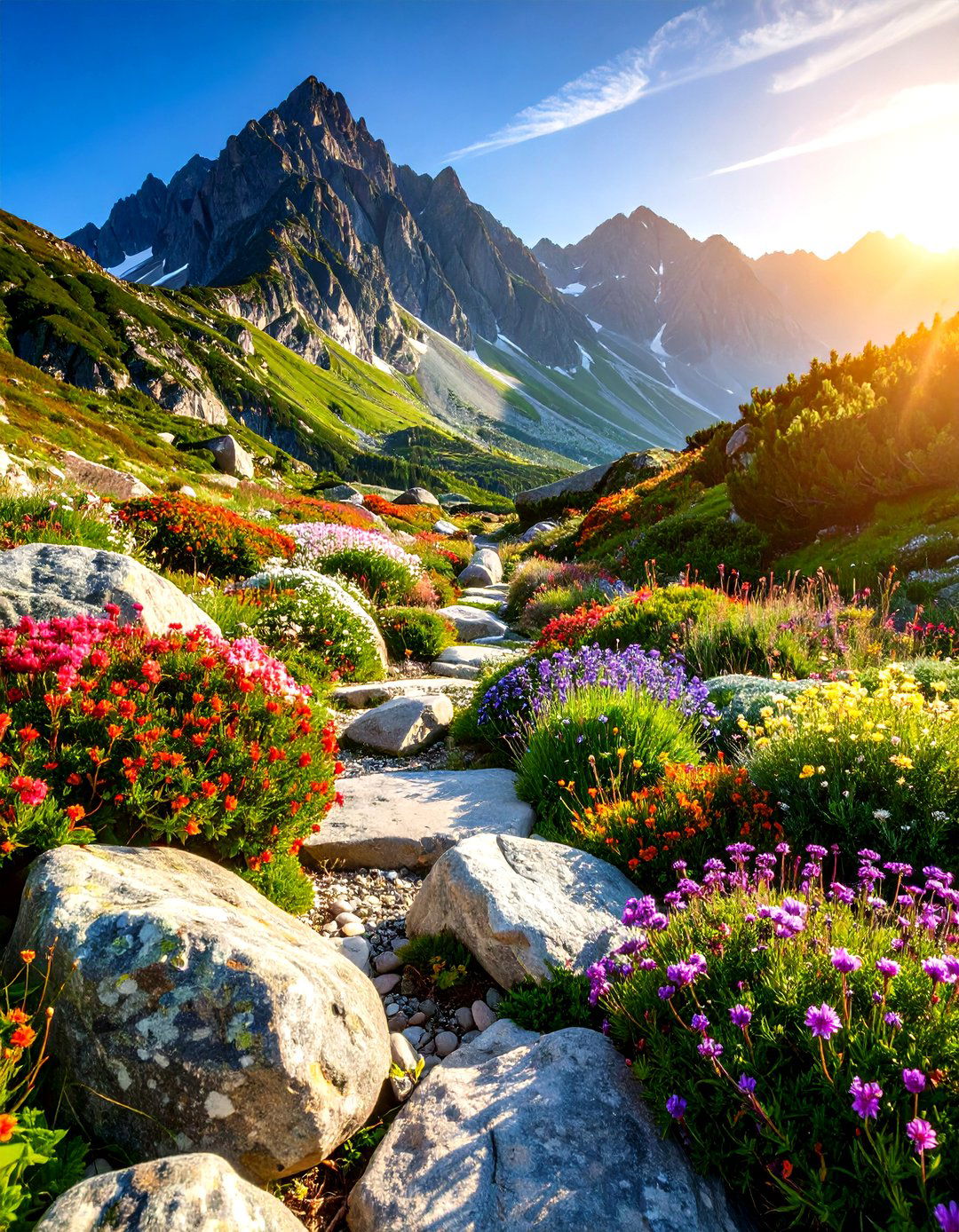
Alpine rock gardens recreate the dramatic beauty of mountain landscapes through carefully arranged stones and high-altitude plant selections. These designs feature naturalistic boulder placement with pockets of well-draining soil perfect for hardy alpine perennials like saxifrages, cushion phlox, and miniature sedums. Traditional alpine plants such as gentians, primulas, and rock cress provide brilliant spring color displays that contrast beautifully against weathered limestone or granite formations. The key to authentic alpine styling lies in using irregular stone placement that mimics natural mountain outcrops, combined with sharp drainage provided by underlying gravel layers. This rock garden style thrives in sunny locations with good air circulation, making it ideal for elevated areas or sloped terrain where drainage naturally occurs.
2. Zen Rock Garden Sanctuary

Zen rock gardens embody the principles of Japanese karesansui design, emphasizing meditation and contemplation through minimalist arrangements of carefully raked gravel and strategically placed stones. These serene spaces feature expanses of fine white or gray gravel raked into flowing patterns that represent water movement, punctuated by substantial rocks symbolizing islands or mountains. Plant material remains extremely limited, perhaps featuring only moss, a single specimen tree, or sparse evergreen shrubs positioned for maximum visual impact. The design focuses on creating viewing areas where observers can sit quietly and appreciate the subtle interplay of texture, shadow, and form. Regular maintenance involves daily raking to maintain crisp patterns and seasonal cleaning to preserve the garden's pristine, contemplative atmosphere throughout the year.
3. Succulent Rock Garden Oasis

Succulent rock gardens combine drought-tolerant plants with decorative stones to create vibrant, water-wise landscapes perfect for contemporary outdoor living. These designs showcase colorful agaves, echeverias, and barrel cacti nestled among decomposed granite pathways and decorative boulder arrangements. Plant selections emphasize varied textures, forms, and colors, from silvery-blue agave rosettes to bright red-tipped jade plants and architectural century plants. Mulching with colored gravel or river rocks enhances drainage while providing attractive background contrast for the sculptural plant forms. This style works exceptionally well in Mediterranean climates and urban settings where water conservation remains a priority, offering year-round visual interest with minimal irrigation requirements and virtually no seasonal maintenance needs.
4. Mediterranean Rock Garden Haven
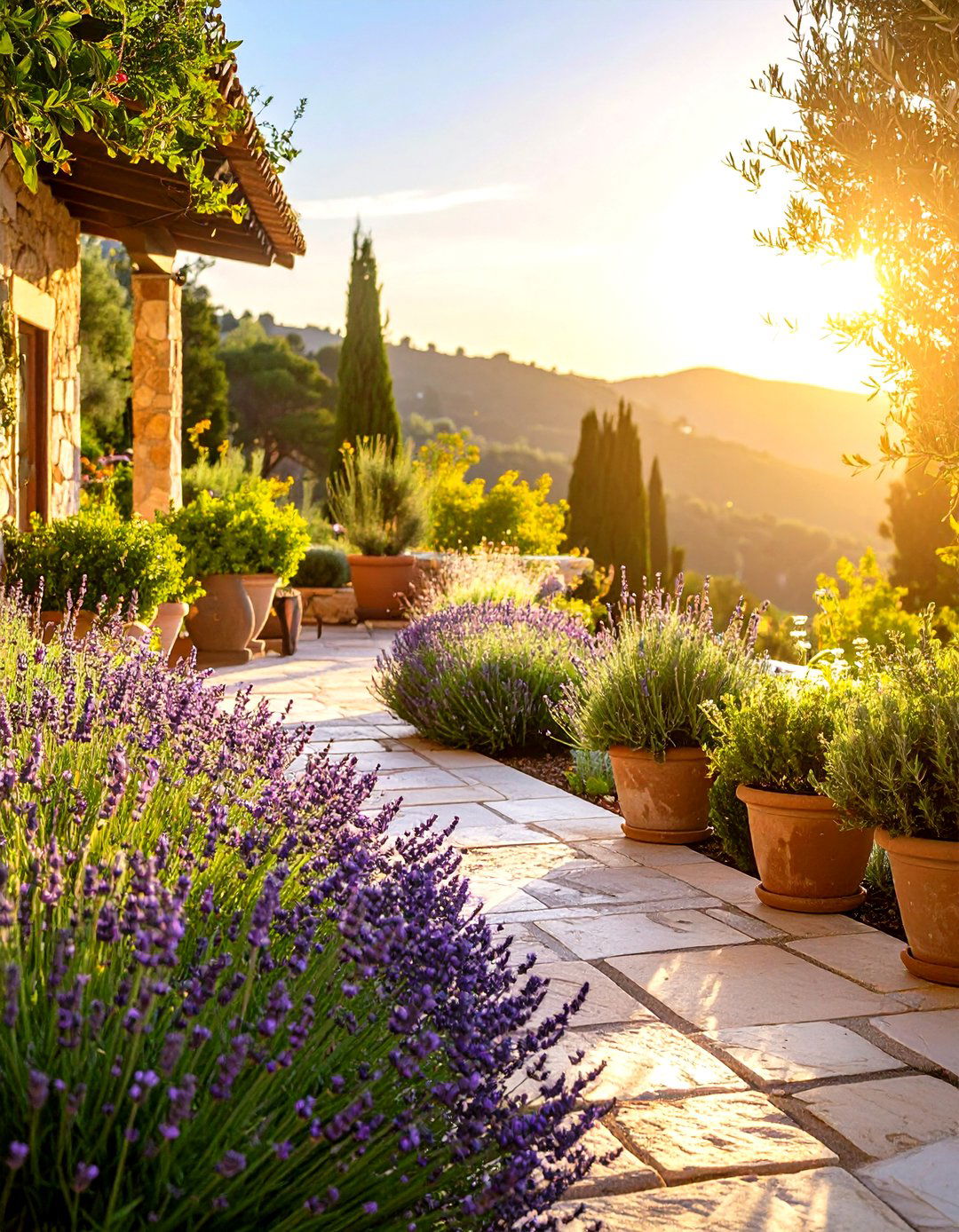
Mediterranean rock gardens capture the essence of hillside terraces through aromatic herbs, silvery foliage plants, and warm-toned natural stones. These designs feature drought-tolerant perennials like lavender, rosemary, and thyme planted among limestone or sandstone arrangements that absorb and radiate warmth. Ornamental grasses such as fountain grass and blue fescue add movement and texture, while flowering plants like rock roses and catmint provide seasonal color bursts. The overall palette emphasizes silvery-green foliage tones complemented by purple, blue, and white flower colors that harmonize with natural stone hues. Gravel pathways wind through planted areas, creating intimate spaces for enjoying the garden's fragrant qualities. This style thrives in sunny, well-drained locations and requires minimal supplemental watering once established.
5. Modern Minimalist Rock Garden Design
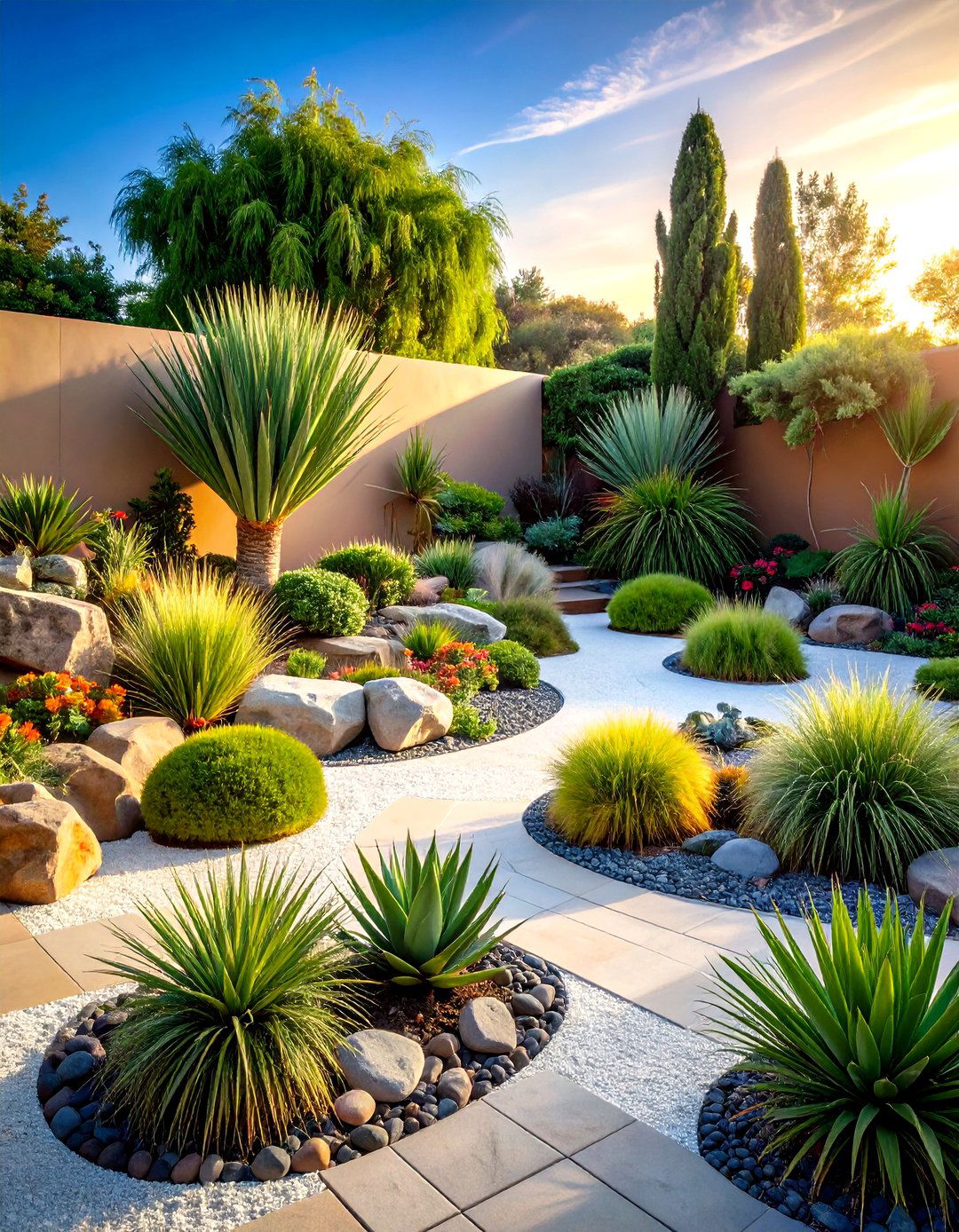
Modern minimalist rock gardens emphasize clean lines, geometric arrangements, and carefully edited plant selections that complement contemporary architecture. These designs feature large-format stones or concrete elements arranged in precise patterns, often incorporating single-species plant groupings for maximum visual impact. Plant choices favor architectural specimens like ornamental grasses, spiky yuccas, or mass plantings of identical succulents that create bold, repetitive patterns. Color palettes remain deliberately restrained, typically featuring monochromatic or limited color schemes that emphasize form and texture over floral display. Decomposed granite or uniform gravel surfaces provide clean background materials that enhance the garden's sophisticated appearance. This style works particularly well in urban settings and complements modern home designs where simplicity and low maintenance requirements are essential considerations.
6. Waterfall Rock Garden Spectacle

Waterfall rock gardens integrate flowing water features with natural stone formations to create dynamic focal points that engage multiple senses. These designs utilize natural or artificial water sources that cascade over carefully positioned rocks, creating pools and streams that wind through planted areas. Plant selections include moisture-loving perennials like astilbe, hostas, and ferns near water features, transitioning to drought-tolerant species in drier elevated areas. The sound of moving water provides natural background ambiance while attracting beneficial wildlife including birds and beneficial insects. Rock placement requires careful engineering to ensure proper water flow and prevent erosion, often incorporating hidden pumps and recirculation systems. This style creates cooling microclimates that extend comfortable outdoor living seasons while providing year-round visual and auditory interest.
7. Terraced Slope Rock Garden Wonder
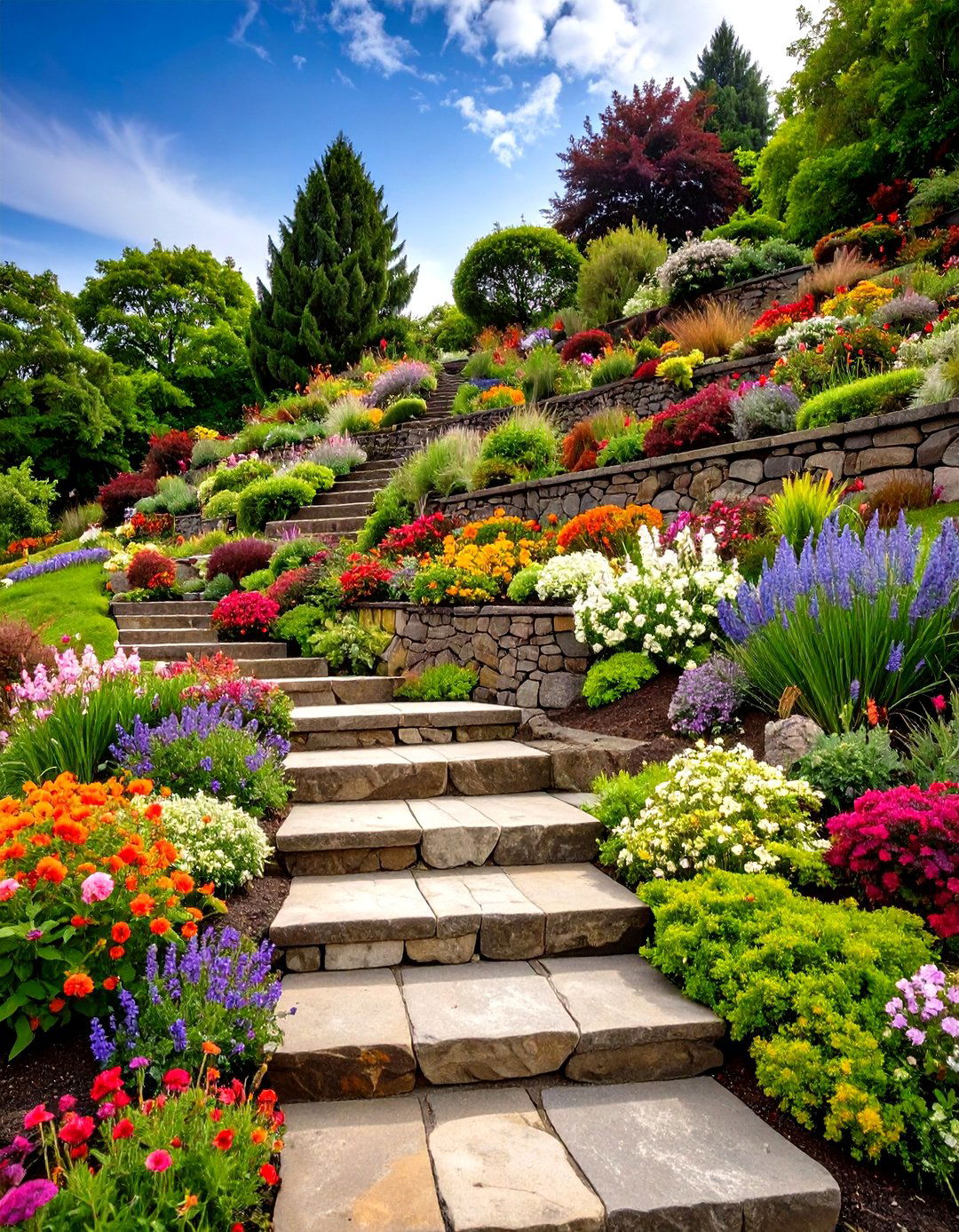
Terraced slope rock gardens transform challenging hillside areas into stunning multi-level landscapes using retaining walls and planted terraces. These designs utilize natural grade changes or create artificial terracing through carefully constructed stone walls that prevent erosion while creating level planting areas. Each terrace level can feature different plant themes, from sun-loving species at the top to shade-tolerant plants at the bottom, maximizing growing conditions throughout the slope. Stone selection should match local materials when possible, creating seamless integration with surrounding landscapes. Proper drainage between levels prevents water accumulation and soil saturation that could destabilize the terraced structure. This approach maximizes planting space on steep terrain while creating dramatic visual impact through vertical layering and varied plant combinations across different elevation zones.
8. Container Rock Garden Collection
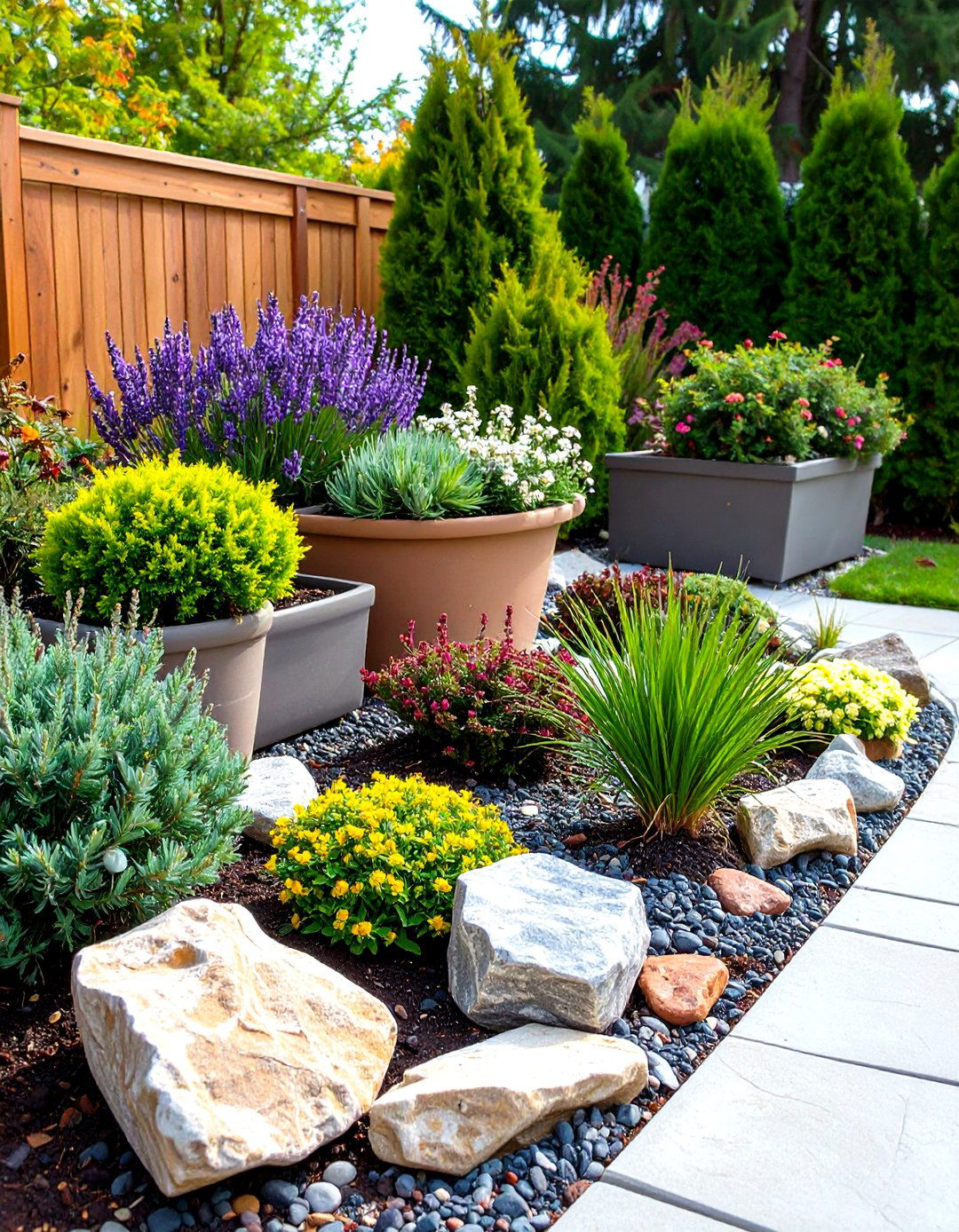
Container rock gardens offer portable solutions for small spaces, patios, and areas where permanent installation isn't possible or practical. These compact designs utilize large planters, troughs, or custom containers filled with appropriate drainage materials and specialized growing mediums for rock plants. Plant selections focus on smaller alpine species, dwarf conifers, and miniature bulbs that provide seasonal interest without overwhelming the container proportions. Stone elements can include small boulders, decorative gravels, and miniature landscape features that create authentic rock garden aesthetics in confined spaces. Containers allow experimentation with different plant combinations and easy relocation for optimal growing conditions or seasonal displays. This approach works particularly well for urban gardening, rental properties, or as transitional features while planning larger permanent rock garden installations.
9. Shade Rock Garden Retreat
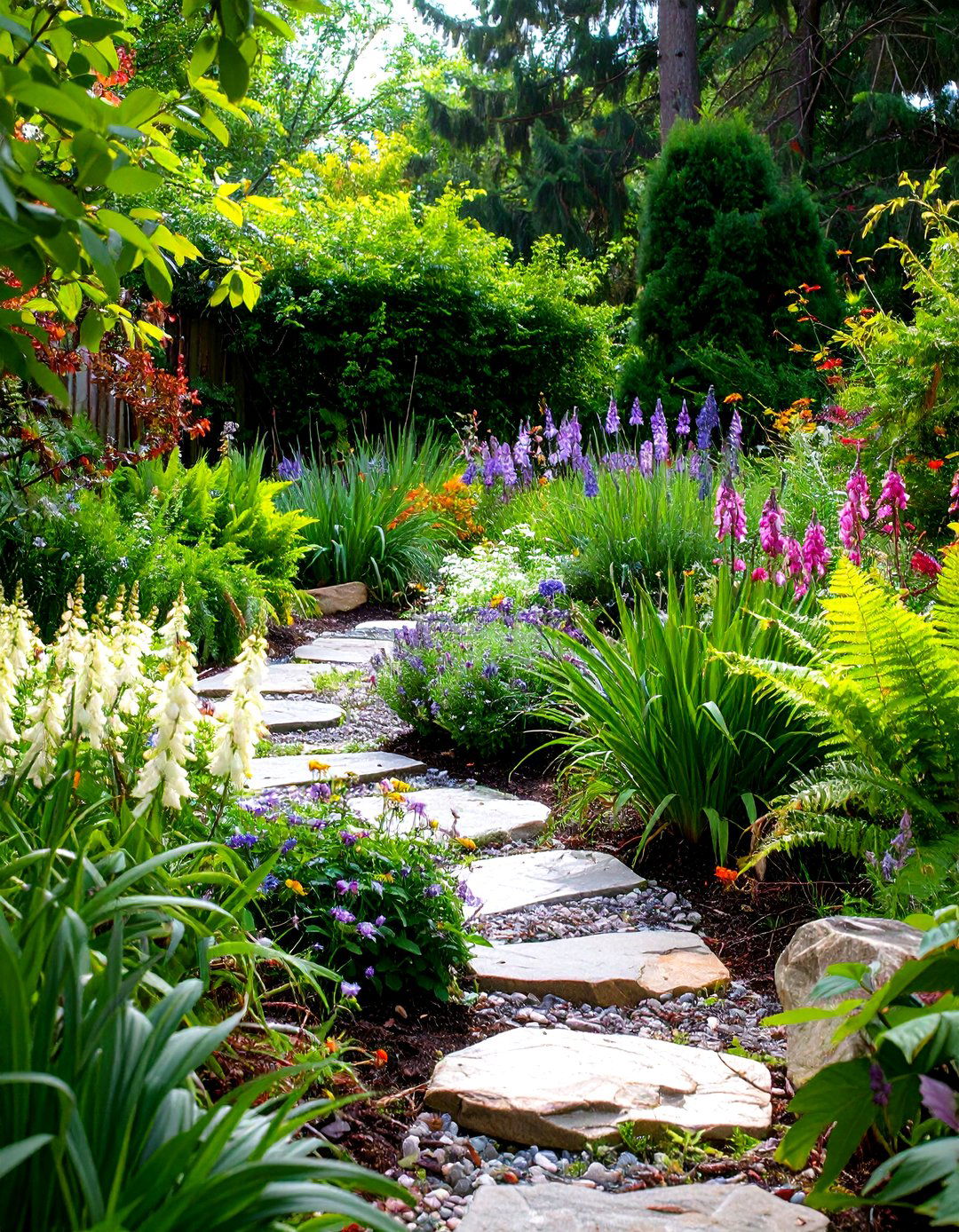
Shade rock gardens adapt traditional rock gardening principles to woodland conditions and shadier locations where full-sun alpine plants wouldn't thrive. These designs feature moisture-retentive rocks like limestone or sandstone that help moderate growing conditions for shade-loving perennials. Plant selections include woodland species like coral bells, foamflower, and native ferns that appreciate the cool, moist conditions created by strategic rock placement. Hostas, wild gingers, and bleeding hearts provide foliage interest and seasonal flowers in filtered light conditions. Rock arrangements should create varying microclimates, from deeper shade beneath larger stones to brighter areas where dappled sunlight penetrates. This style works exceptionally well under existing trees or on north-facing slopes where traditional rock gardens might struggle to establish successfully.
10. Cottage-Style Rock Garden Charm
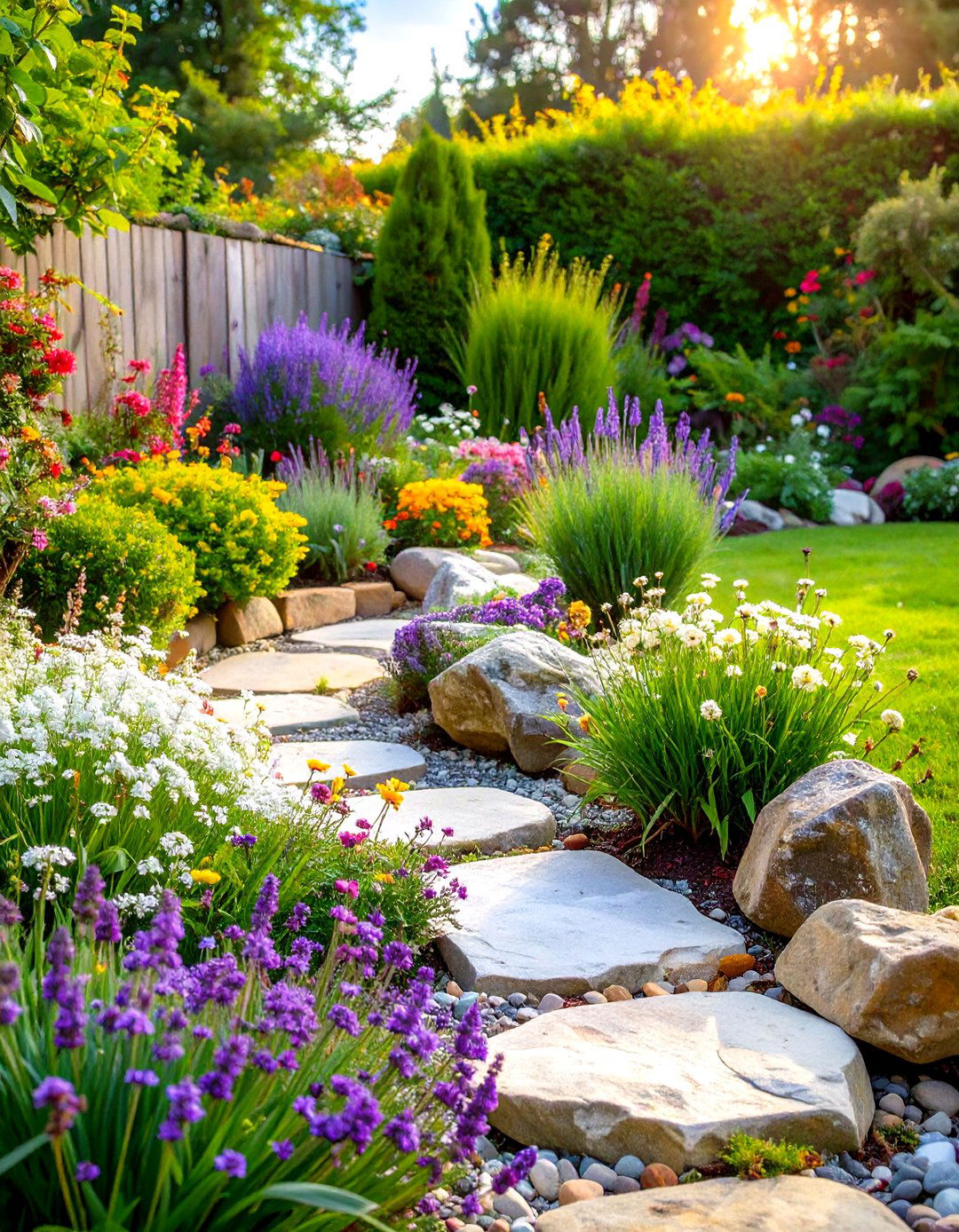
Cottage-style rock gardens combine informal planting schemes with rustic stone arrangements to create welcoming, lived-in landscapes that evolve naturally over time. These designs feature abundant flowering perennials like creeping phlox, candytuft, and rock cress that spill naturally over stone edges and self-seed into crevices. Plant selections emphasize continuous seasonal color through bulbs, perennials, and small shrubs that create cottage garden abundance within rock garden structure. Natural fieldstone or weathered limestone provides appropriate rustic character, often arranged in informal patterns that appear to have developed organically. This style encourages beneficial insects and wildlife through diverse plant selections and slightly relaxed maintenance approaches. The overall effect should feel abundant and welcoming rather than overly controlled, creating outdoor spaces that invite close examination and quiet enjoyment.
11. Gravel Rock Garden Landscape
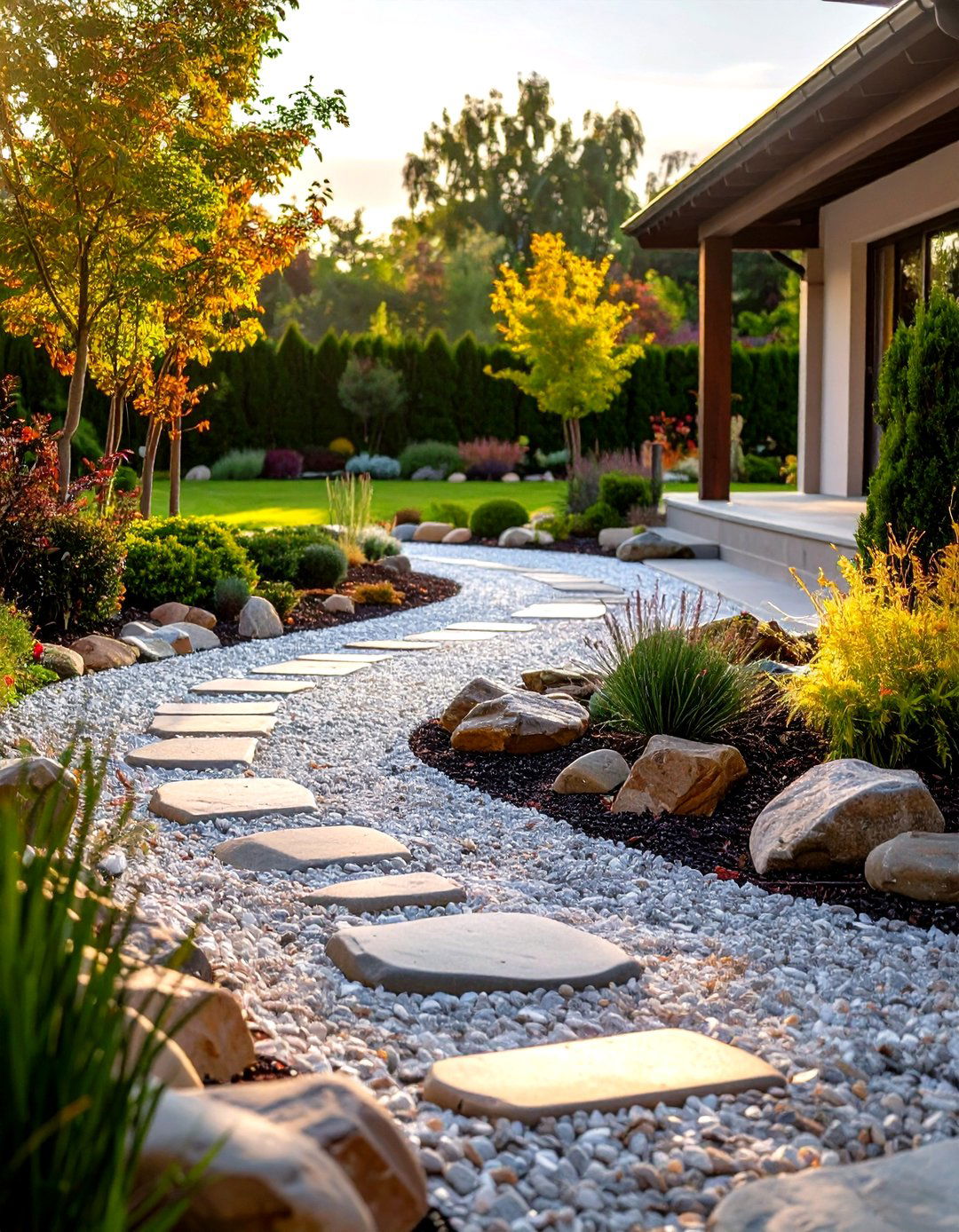
Gravel rock gardens emphasize decorative stone materials as primary design elements, using varied gravel types, colors, and textures to create sophisticated patterns and visual interest. These designs feature extensive gravel areas punctuated by carefully placed accent plants and occasional larger stones or architectural elements. Plant selections remain minimal and carefully chosen for their ability to contrast with gravel backgrounds, often featuring spiky or architectural specimens that create bold silhouettes. Different gravel types can define separate garden areas or create flowing patterns that guide circulation through the space. This approach offers excellent weed suppression, superior drainage, and extremely low maintenance requirements once established. Color combinations might include warm earth tones, cool gray palettes, or dramatic contrasts that complement architectural features and existing landscape elements throughout the property.
12. Wildlife Rock Garden Habitat
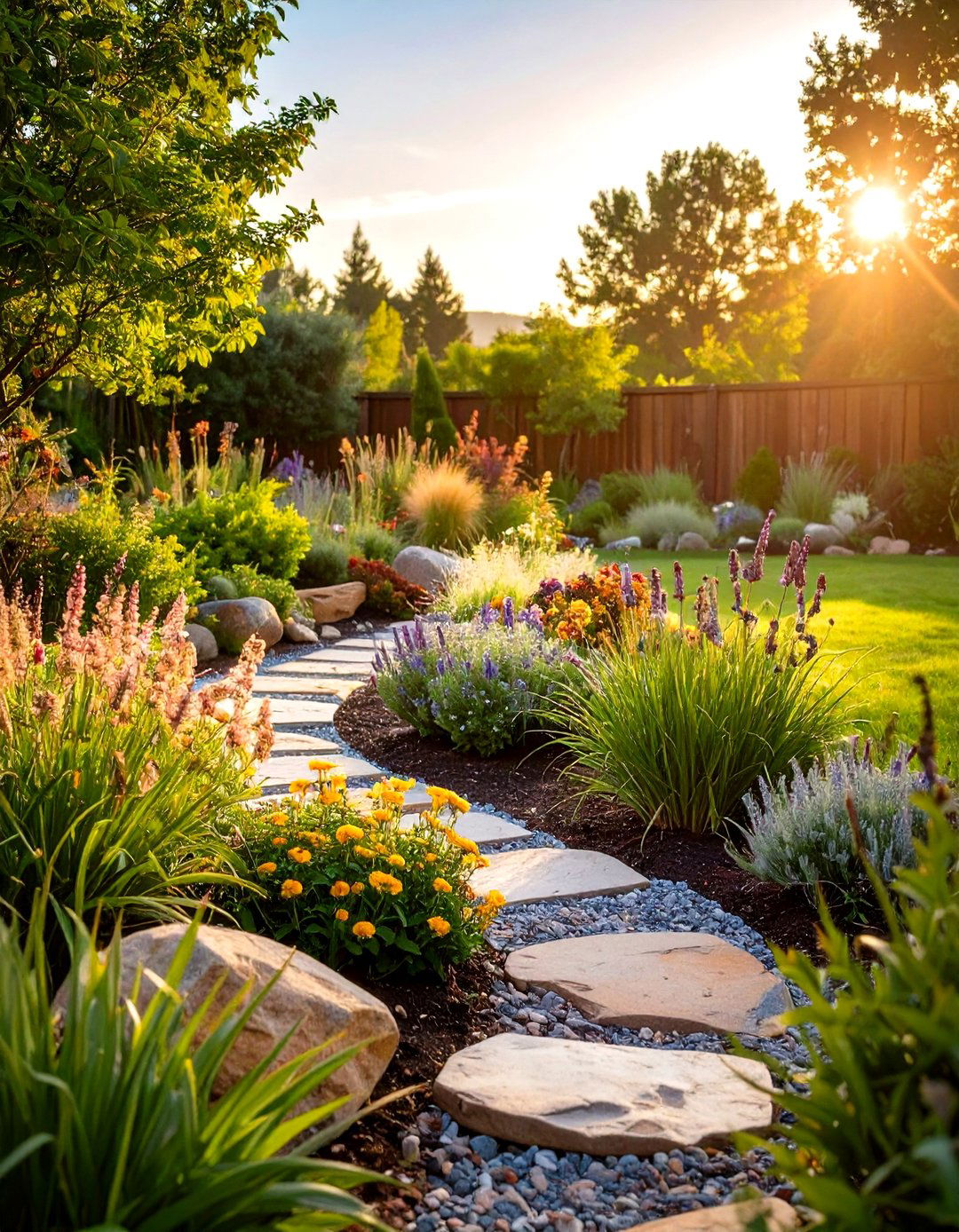
Wildlife rock gardens prioritize native plant selections and habitat creation while maintaining aesthetic appeal through thoughtful design and strategic rock placement. These designs feature indigenous perennials, grasses, and small shrubs that provide food sources, nesting opportunities, and shelter for local wildlife populations. Rock arrangements create varied microclimates and hiding places for beneficial insects, small mammals, and ground-nesting birds. Plant selections should bloom throughout the growing season, ensuring continuous nectar sources for pollinators while providing seeds and berries for resident wildlife. Water features like small pools or bird baths enhance habitat value while adding visual interest. This style requires understanding local ecosystems and native plant communities, but rewards gardeners with increased biodiversity, reduced maintenance needs, and the satisfaction of supporting environmental stewardship through responsible landscape design.
13. Crevice Rock Garden Architecture

Crevice rock gardens utilize narrow planting spaces between closely fitted stones to create dramatic vertical displays and unique growing environments for specialized plants. These designs require careful stone selection and fitting to create stable structures with appropriate planting pockets and drainage characteristics. Plant selections focus on species adapted to extremely well-drained conditions and restricted root space, including many alpine cushion plants and small bulbs. The vertical orientation allows maximum plant display in minimal ground space while creating striking architectural features that serve as garden focal points. Stone placement must ensure structural stability while providing appropriate soil depth and root run for plant establishment. This specialized technique requires advanced rock gardening knowledge but creates unique landscapes that showcase rare plants and demonstrate sophisticated horticultural skills.
14. Scree Rock Garden Formation
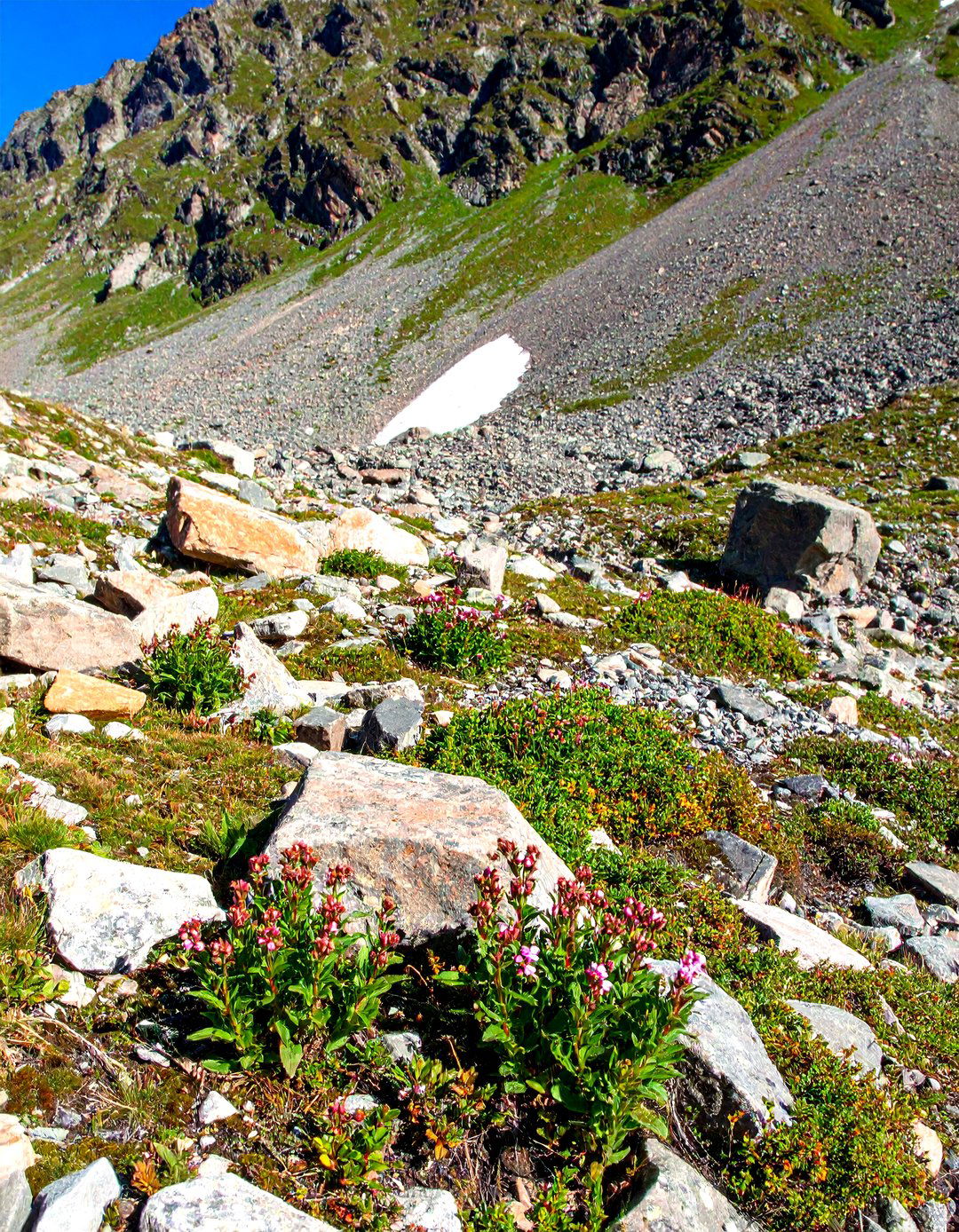
Scree rock gardens replicate the loose, well-drained conditions found on mountain slopes where rock debris accumulates naturally over time. These designs feature deep layers of mixed stone sizes from large boulders down to fine gravel, creating extremely sharp drainage conditions perfect for specialized alpine plants. Plant selections include species specifically adapted to scree conditions, such as cushion plants, small bulbs, and drought-tolerant perennials that thrive in mineral-rich, low-organic soils. The design should appear naturally random while providing proper drainage and root run for plant establishment. This style works particularly well on slopes or raised areas where natural drainage occurs, creating authentic mountain habitat conditions that support challenging but rewarding plant collections. Proper construction requires understanding drainage principles and appropriate plant-to-soil ratios for long-term success.
15. Coastal Rock Garden Seascape
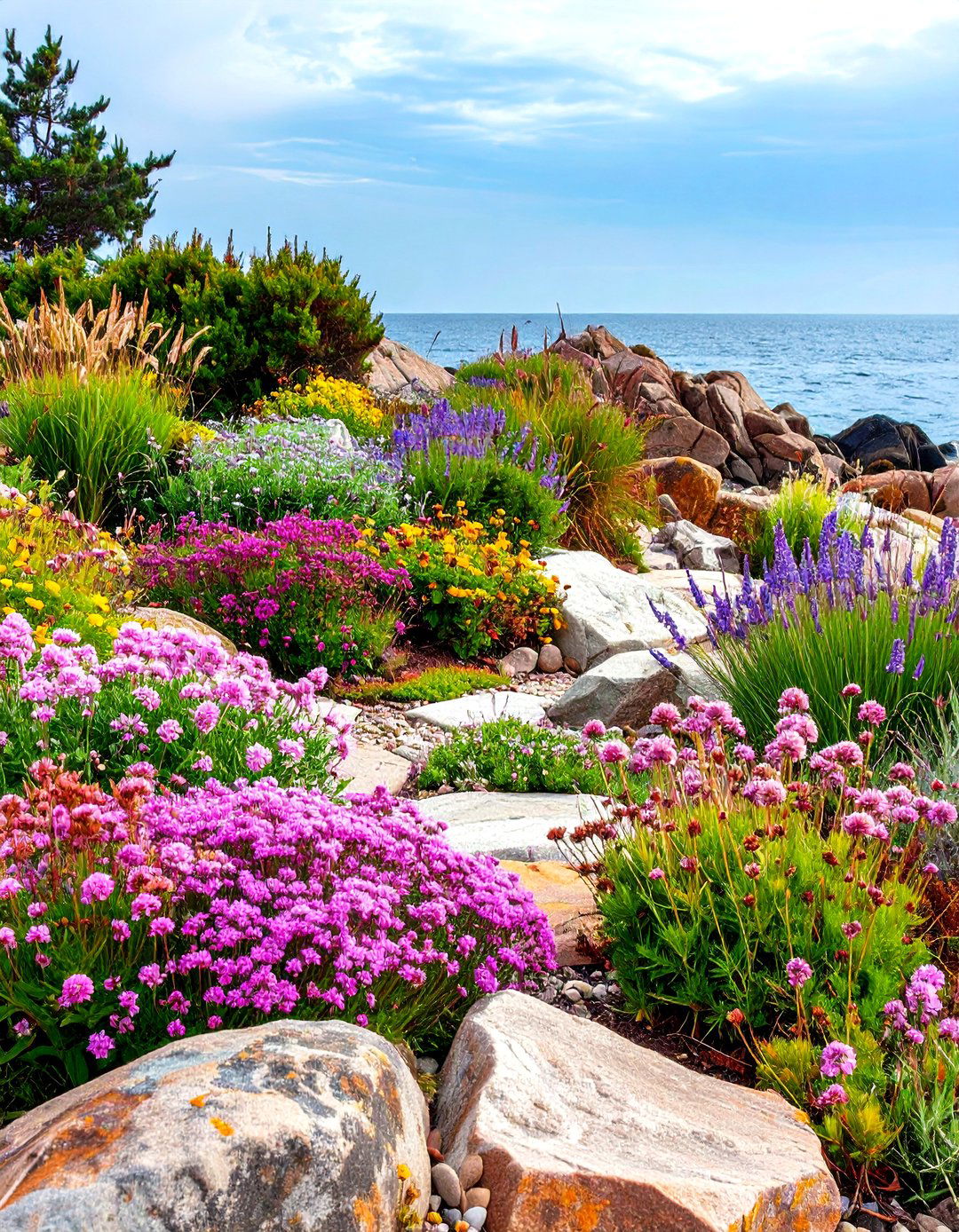
Coastal rock gardens adapt to seaside conditions through salt-tolerant plant selections and wind-resistant design strategies that create beautiful landscapes despite challenging environmental conditions. These designs feature plants naturally adapted to coastal conditions, including sea thrift, beach grasses, and native succulents that tolerate salt spray and constant air movement. Rock selections should resist salt corrosion and provide wind protection for more sensitive plants, often incorporating local stone materials that harmonize with regional landscapes. Design considerations include prevailing wind patterns, salt exposure levels, and seasonal storm protection for both plants and structural elements. Plant arrangements should create graduated height transitions that provide wind protection while maintaining ocean views where appropriate. This style celebrates coastal environments while working with rather than against challenging natural conditions.
16. Ornamental Grass Rock Garden Prairie
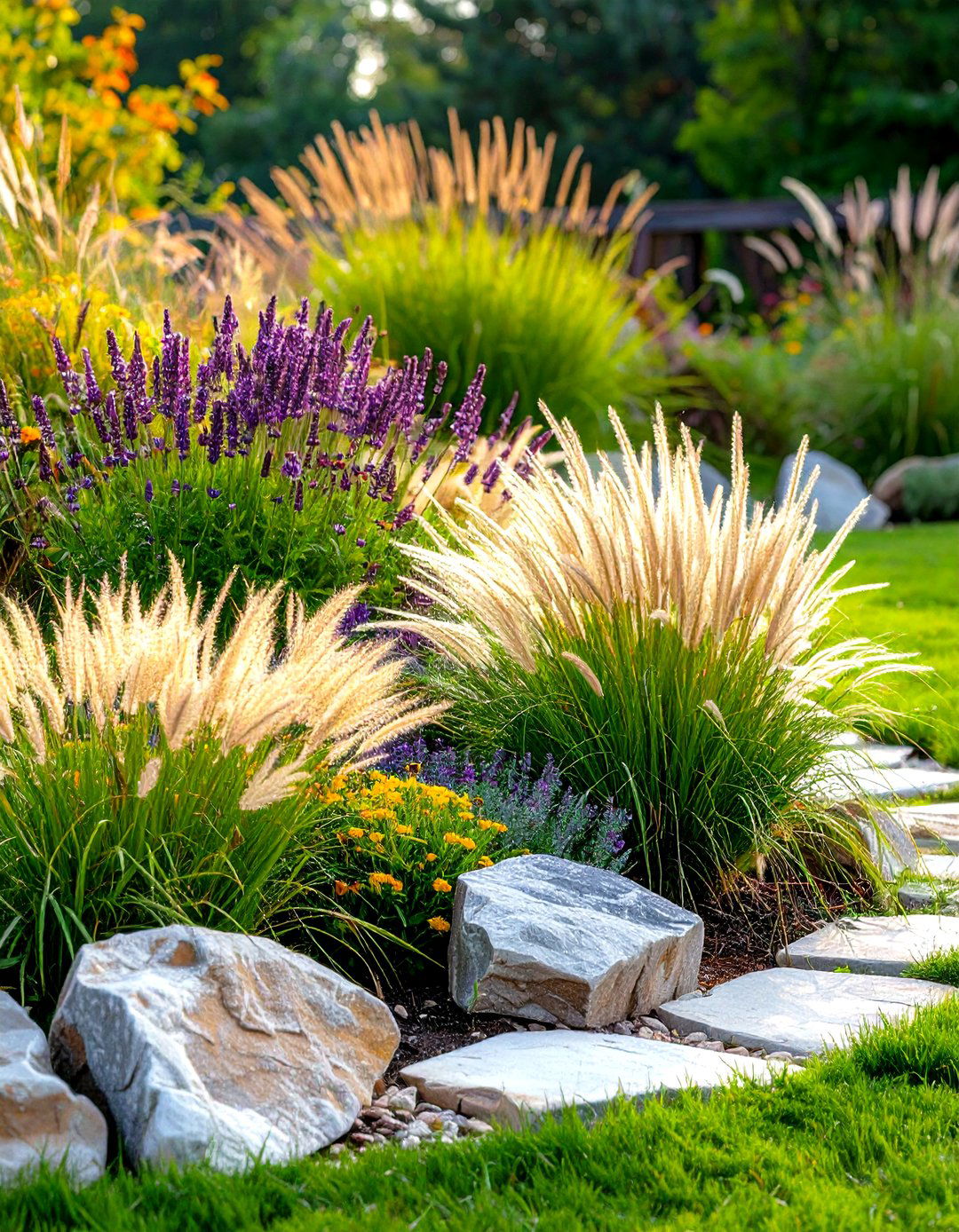
Ornamental grass rock gardens feature decorative grasses as primary design elements, using stones to provide structure and seasonal contrast to flowing, naturalistic plantings. These designs emphasize grasses with varied textures, heights, and seasonal color changes, from fine-textured fescues to dramatic pampas grass specimens. Rock placement provides visual weight and structure that balances the soft, movement-oriented character of grass plantings while creating microclimates for specialized plants. Plant selections might include native prairie species, Mediterranean grasses, or contemporary ornamental varieties depending on climate and design goals. Seasonal interest comes from grass seed heads, autumn color changes, and winter structural beauty that persists through dormant seasons. This style works particularly well in larger landscapes where naturalistic movements and seasonal changes create dynamic, ever-changing displays.
17. Seasonal Rock Garden Theater
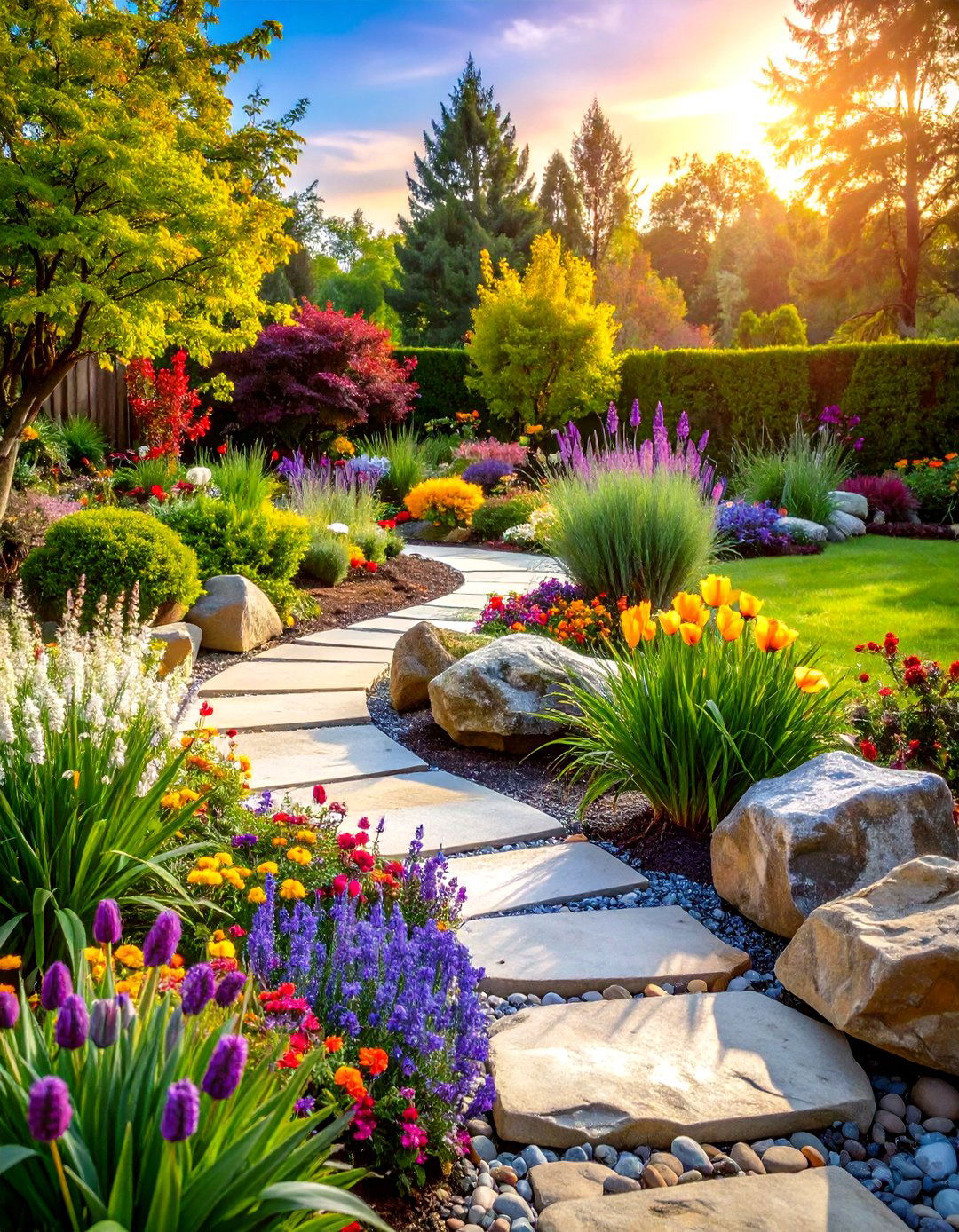
Seasonal rock gardens provide carefully orchestrated displays that highlight different plants and features throughout the year, ensuring continuous interest and beauty through all seasons. These designs incorporate spring bulbs, summer perennials, autumn-flowering species, and winter-interest plants that create ever-changing displays against permanent stone frameworks. Plant selections should provide succession blooming, varied foliage textures, and structural elements that remain attractive during dormant periods. Rock arrangements provide permanent architectural interest while supporting plants through seasonal transitions and weather extremes. Design planning requires understanding bloom times, foliage changes, and dormancy periods to ensure seamless seasonal transitions. This approach rewards gardeners with year-round beauty and encourages regular garden observation and interaction throughout changing seasons.
18. Naturalistic Rock Garden Ecosystem
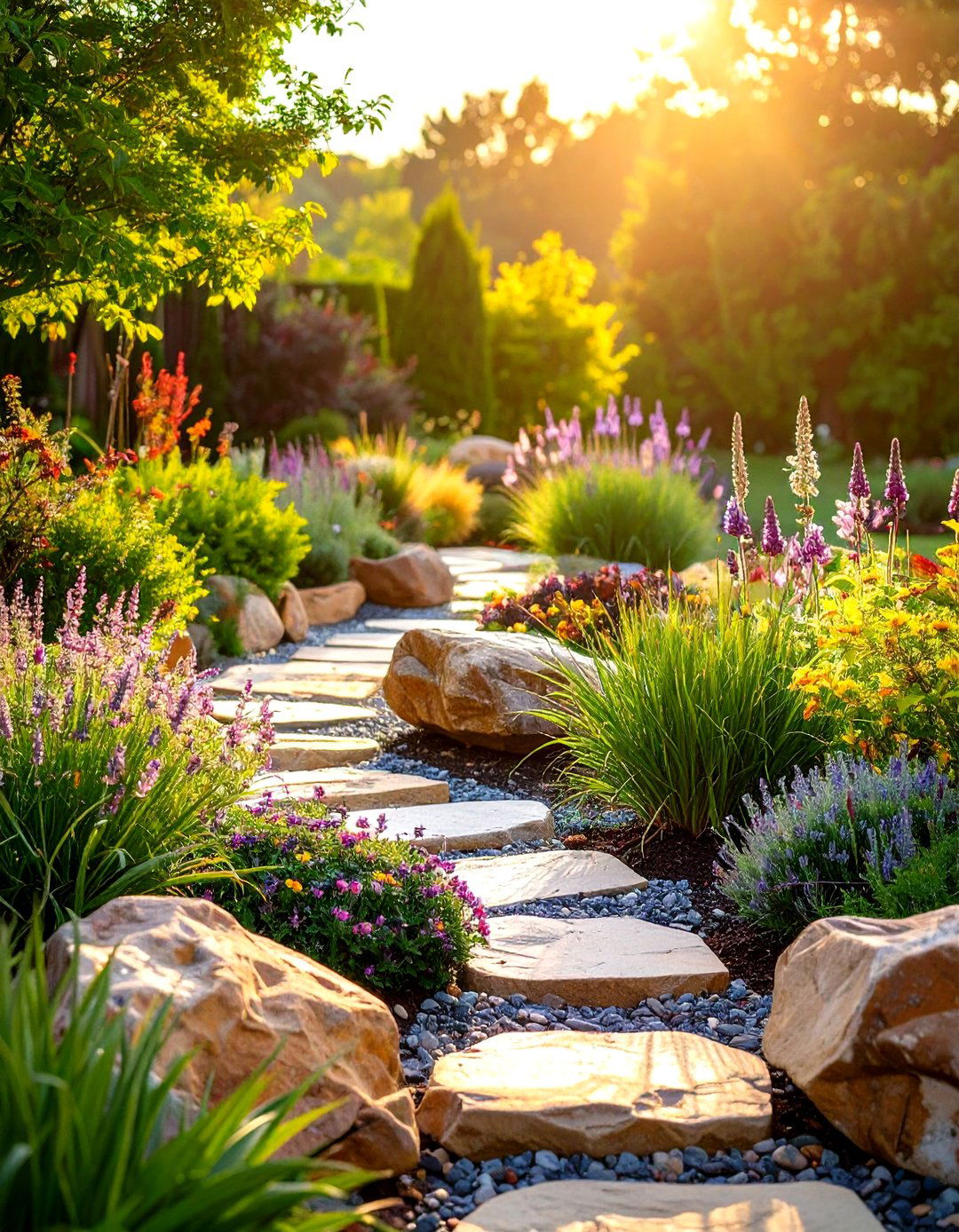
Naturalistic rock gardens recreate specific natural habitats through authentic plant communities and geologically appropriate stone selections that mimic wild landscapes. These designs require research into local plant associations and growing conditions to create convincing replicas of natural environments. Plant selections should reflect authentic community relationships and succession patterns found in wild habitats, avoiding artificial combinations that wouldn't occur naturally. Rock types and arrangements should match geological formations from the target ecosystem, creating authentic growing conditions and visual characteristics. This style appeals to gardeners interested in ecology and natural history, providing opportunities to study and preserve regional plant communities. Maintenance approaches should mirror natural processes when possible, allowing for self-seeding, natural plant competition, and ecological succession that creates increasingly authentic habitat conditions over time.
19. Raised Bed Rock Garden Platform

Raised bed rock gardens elevate plantings above grade level to improve drainage, soil conditions, and accessibility while creating prominent landscape features. These designs utilize constructed walls or natural stone arrangements to contain specialized growing mediums and create optimal conditions for rock garden plants. Elevation provides improved drainage essential for alpine and desert plants while creating better viewing angles for smaller specimens and intricate details. Wall construction allows for incorporating specialized soil mixes, drainage layers, and root barriers that ensure long-term plant health and structural stability. Plant selections can include species requiring specific soil conditions that might not be achievable in native soils. This approach works particularly well in areas with heavy clay soils, poor drainage, or where physical accessibility requires raised planting areas.
20. Herb Rock Garden Kitchen
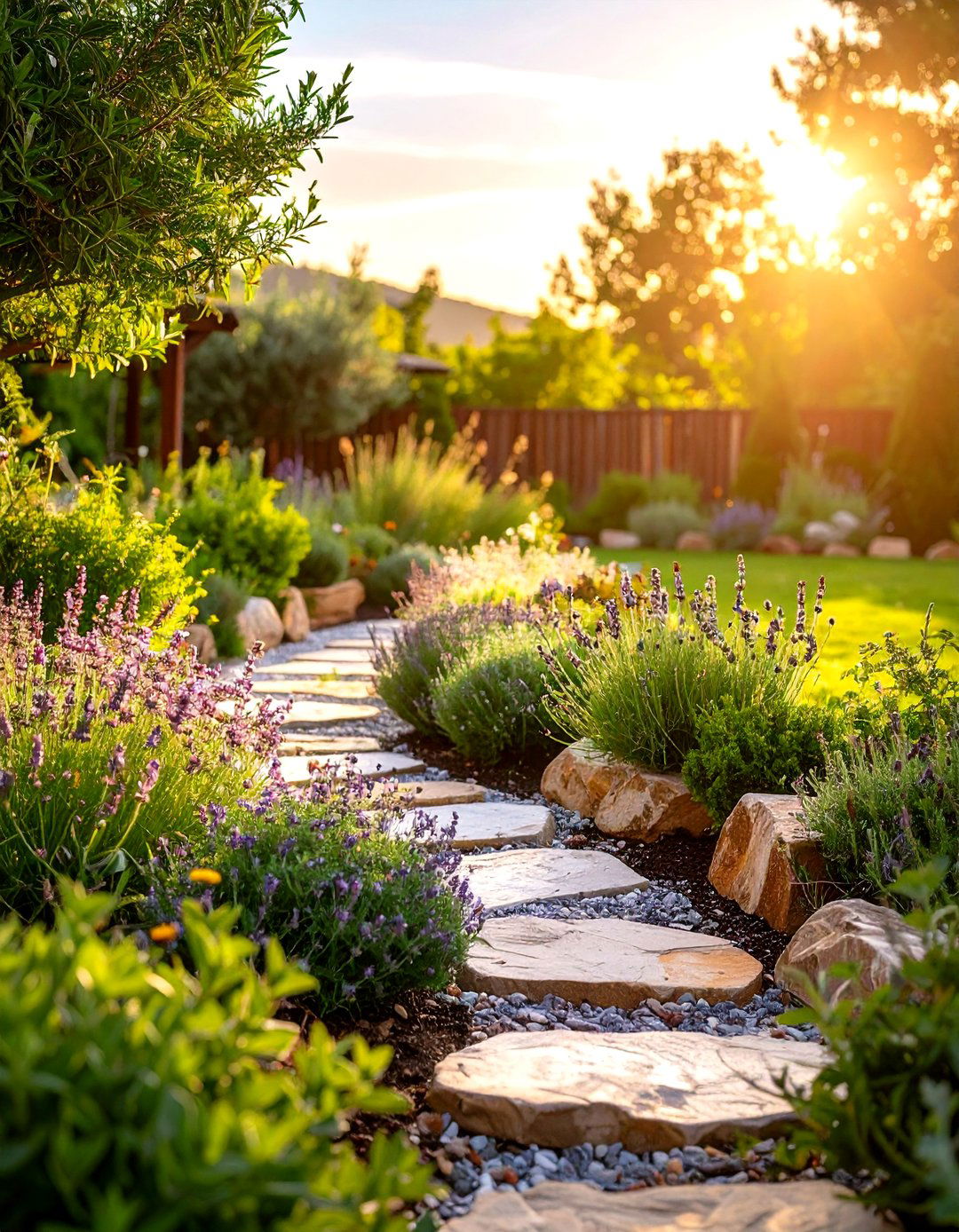
Herb rock gardens combine culinary and aromatic plants with stone arrangements to create functional landscapes that provide fresh ingredients while maintaining aesthetic appeal. These designs feature Mediterranean herbs like oregano, thyme, and sage that thrive in well-drained rocky conditions alongside aromatic plants like lavender and rosemary. Rock arrangements provide wind protection, heat retention, and improved drainage that enhance herb production and plant health. Plant selections should consider culinary uses, harvest timing, and companion planting relationships that create mutually beneficial growing conditions. Pathways and access areas should facilitate easy harvesting and maintenance activities throughout the growing season. This style appeals to gardeners interested in sustainable living and homegrown ingredients, creating beautiful landscapes that provide practical benefits while supporting kitchen gardening goals and healthy lifestyle choices.
Conclusion:
Rock gardens offer transformative potential for any landscape, combining aesthetic beauty with practical advantages that address modern gardening challenges. These 20 distinct approaches demonstrate the versatility and adaptability of rock garden design, from water-wise xeriscapes to productive herb gardens. Whether seeking low-maintenance solutions, wildlife habitat creation, or dramatic focal points, rock gardens provide sustainable landscaping options that thrive in diverse conditions. The key to success lies in matching design styles with site conditions, personal preferences, and maintenance capabilities while embracing the unique character that stones and plants create together.


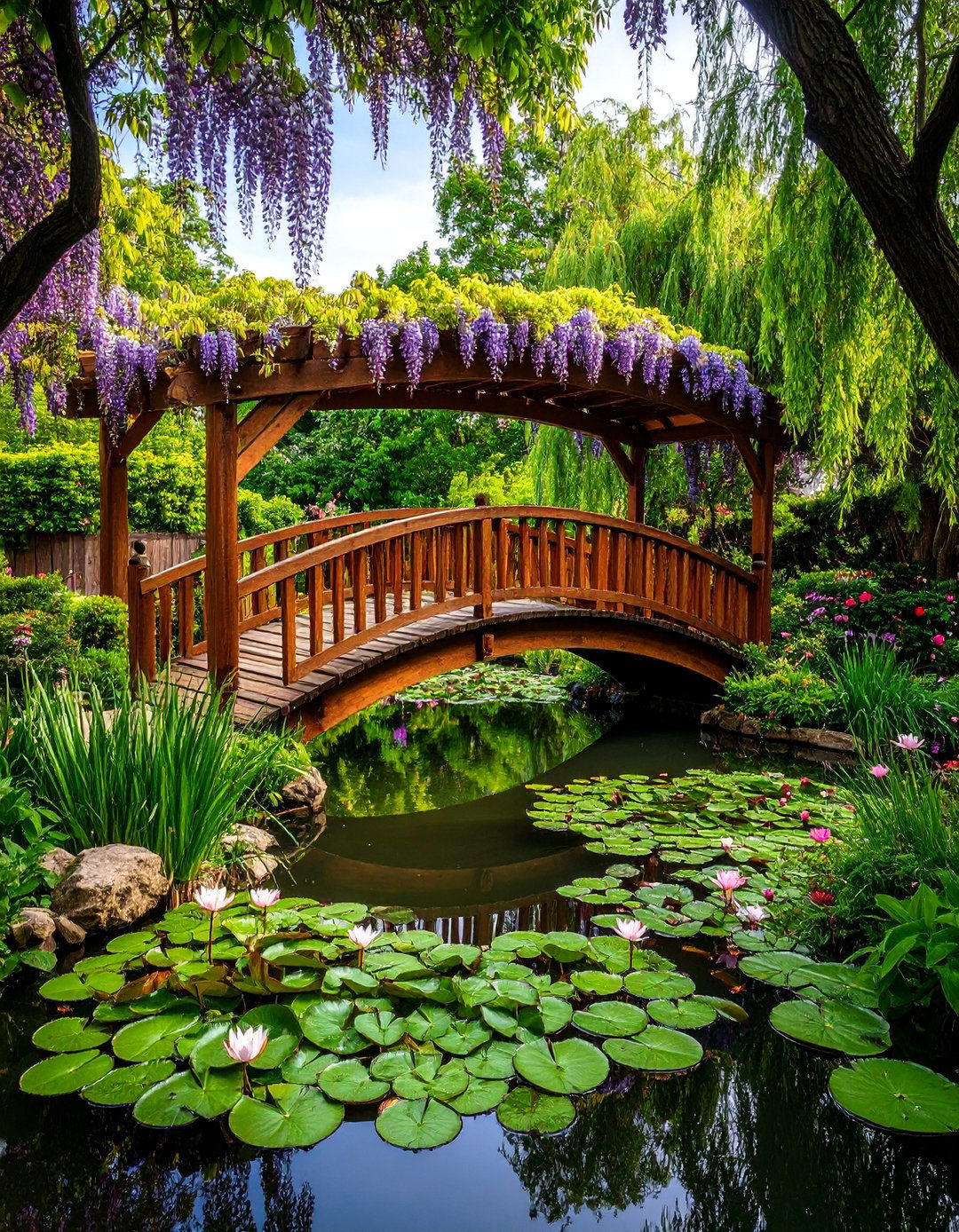
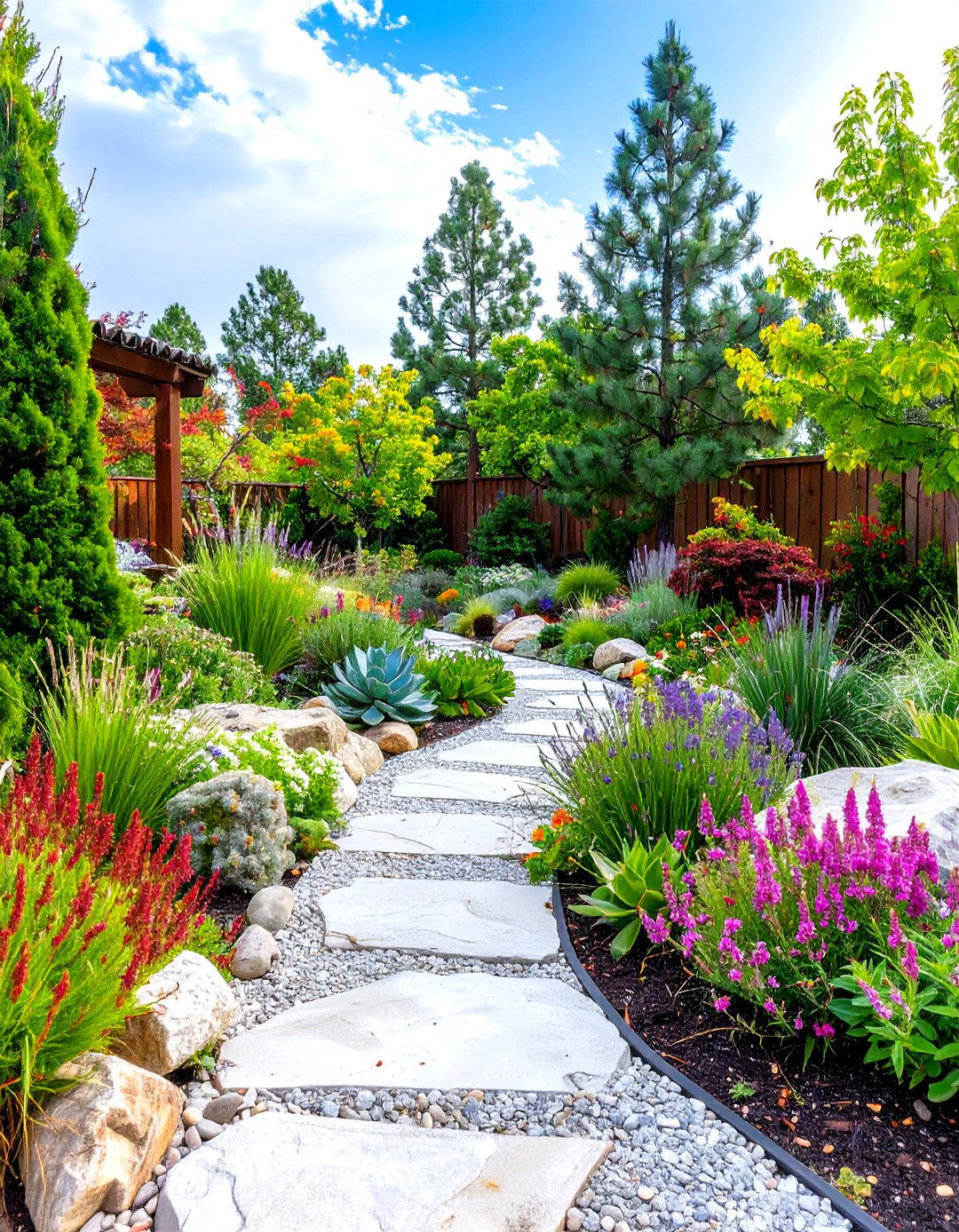


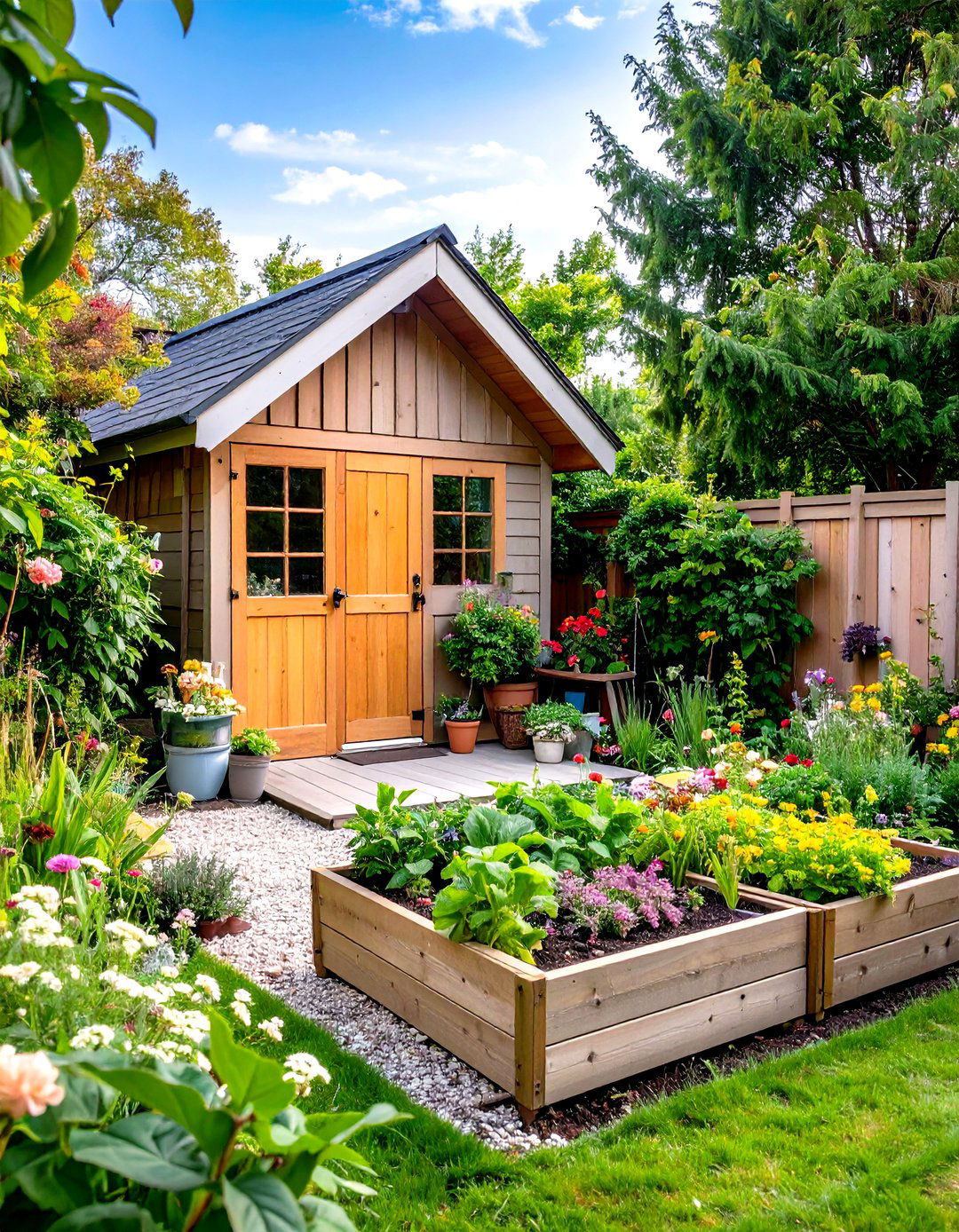
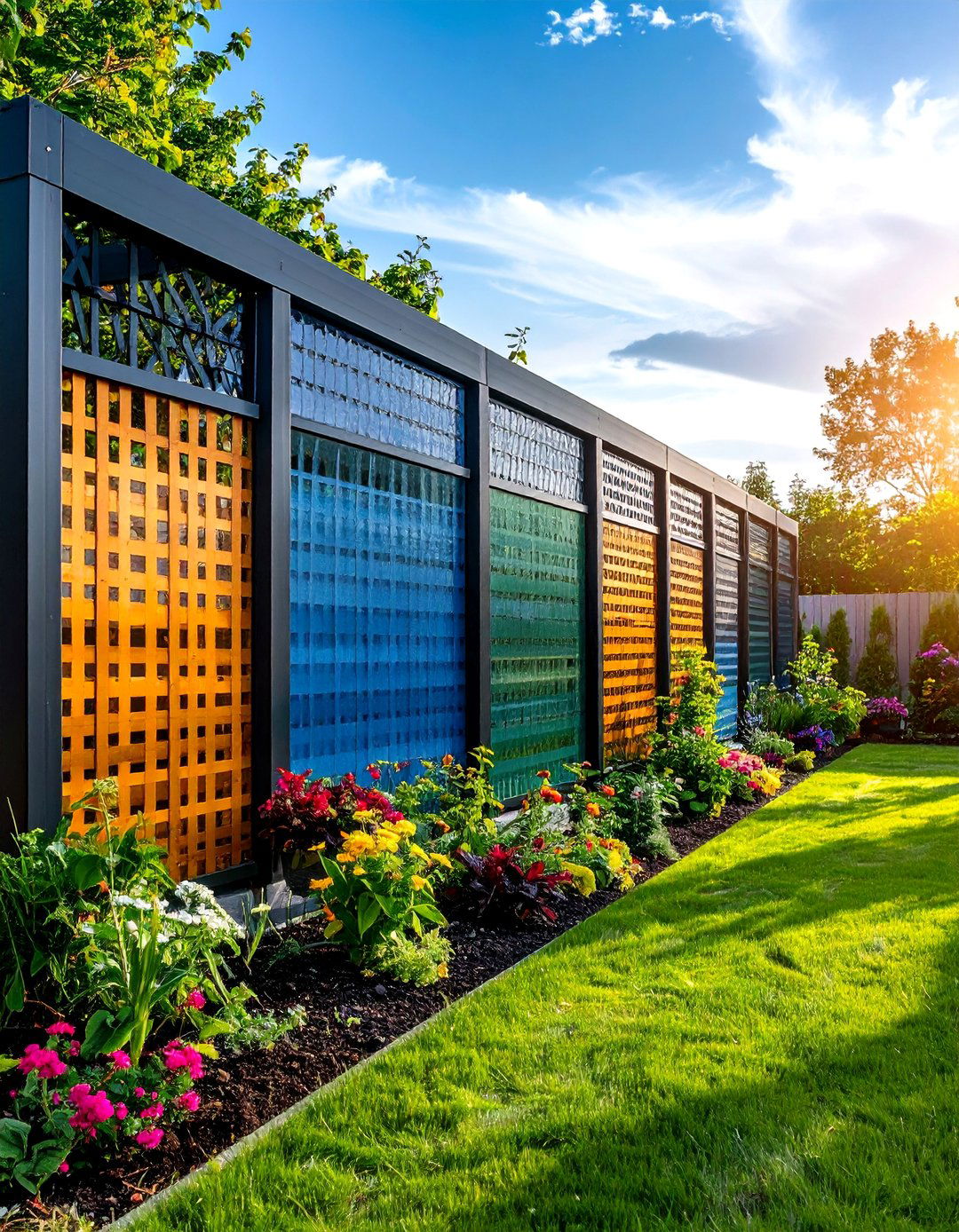

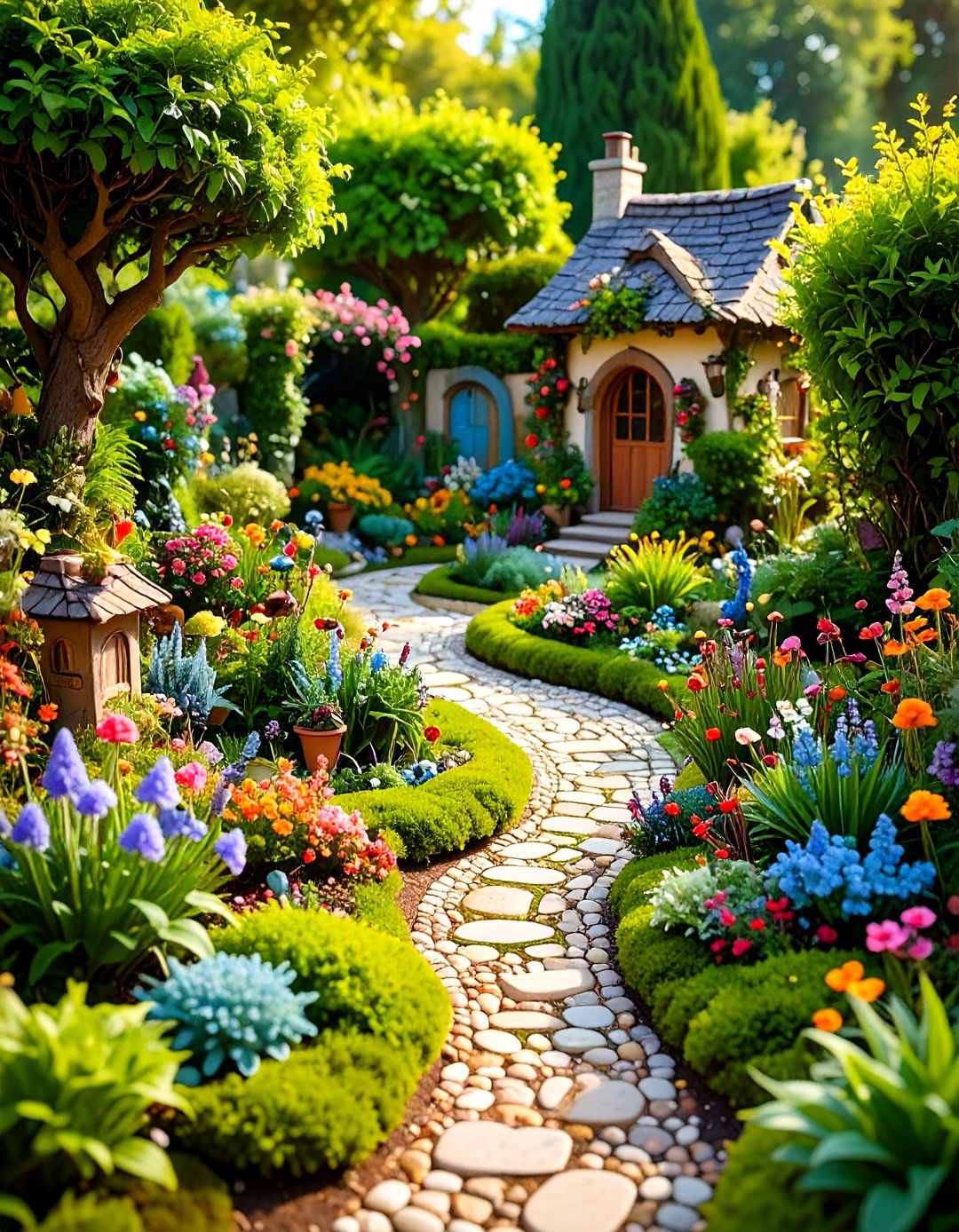
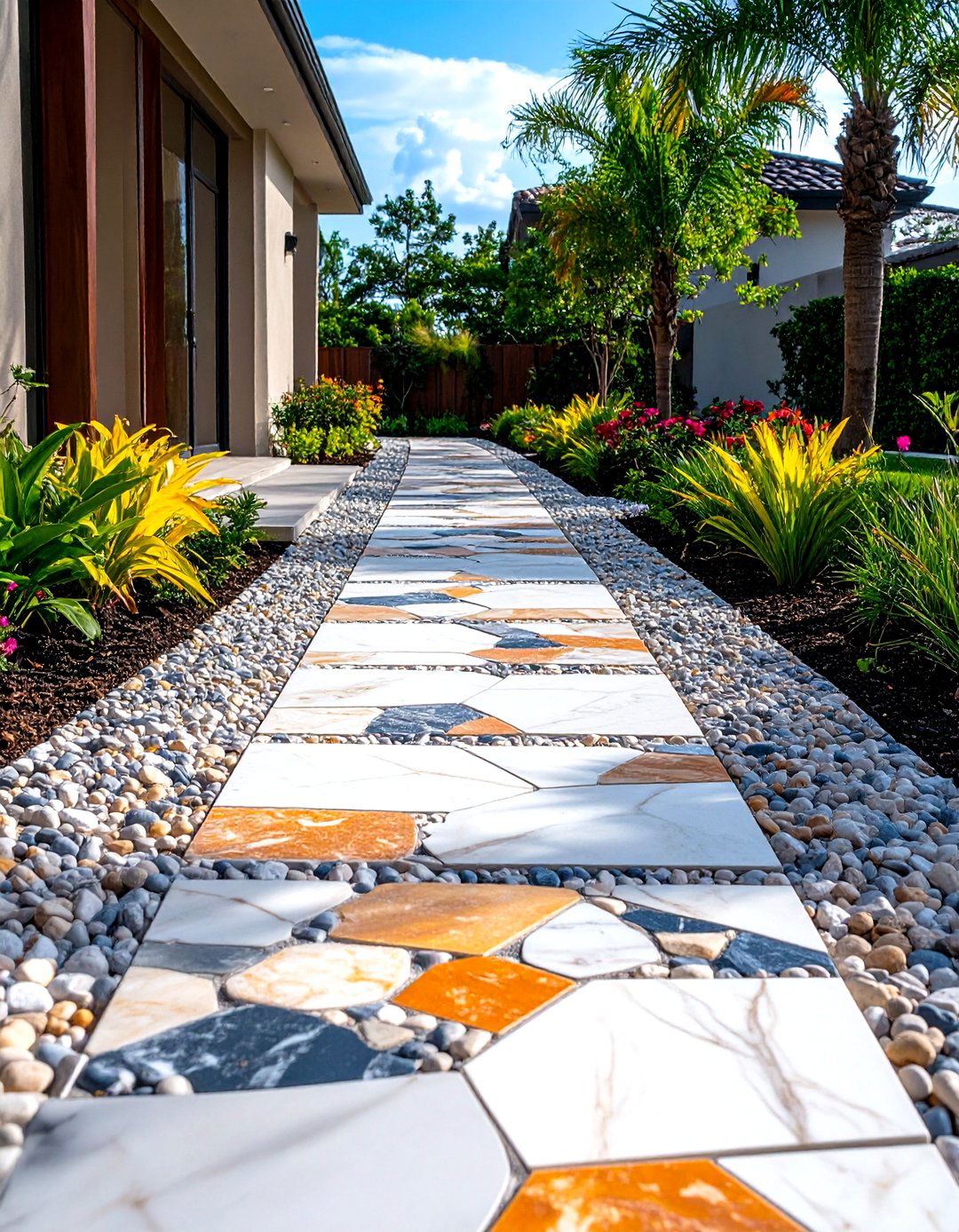

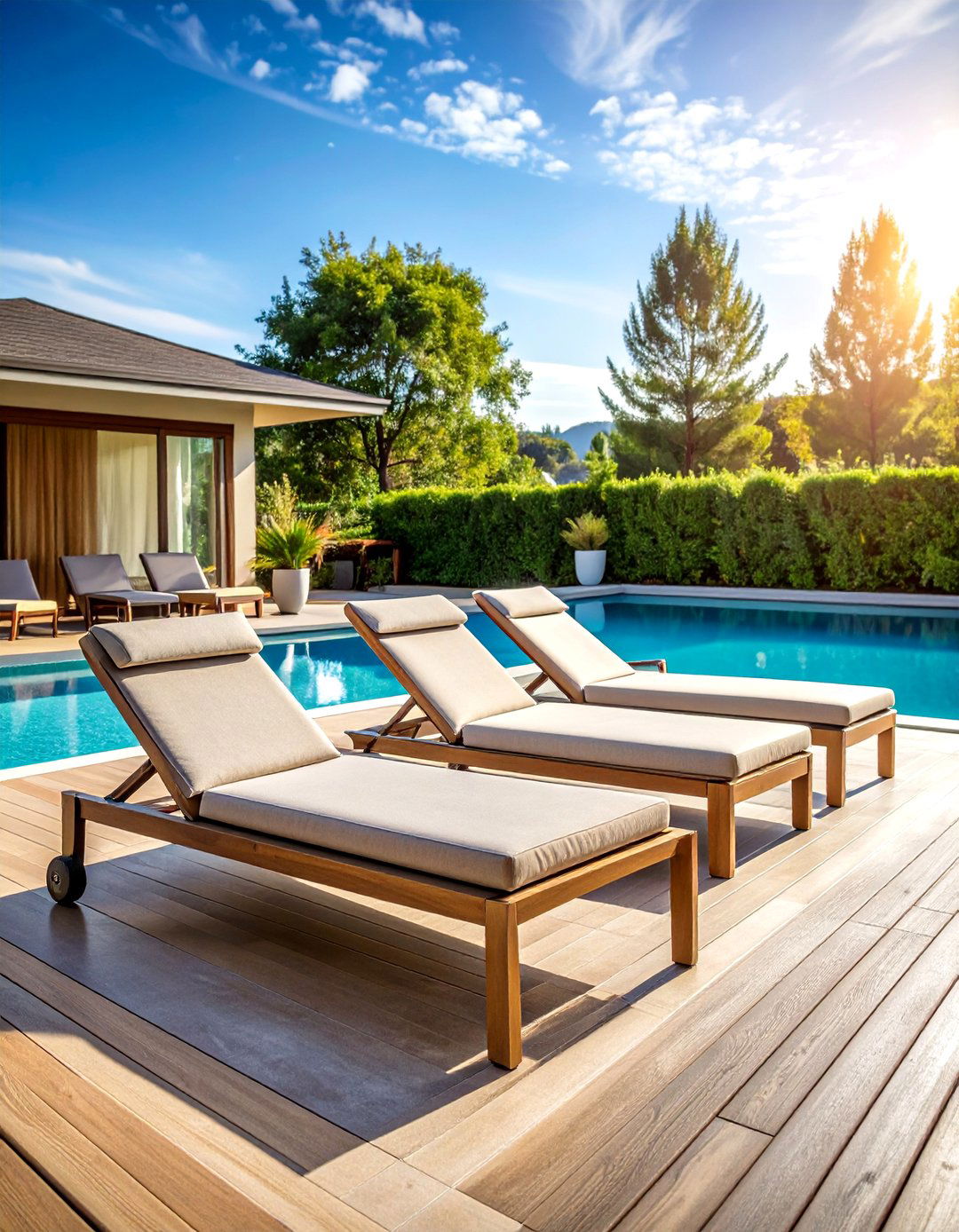
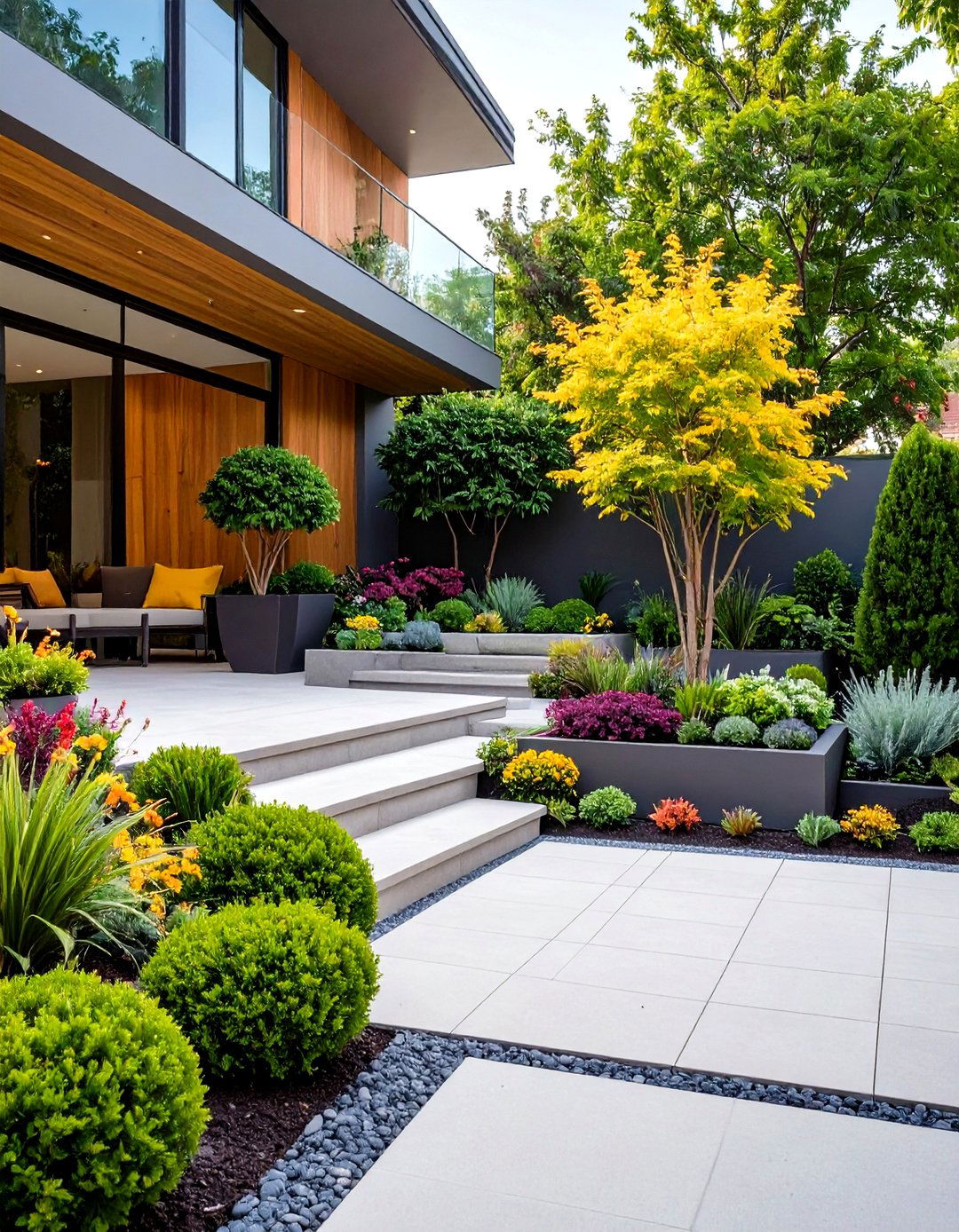
Leave a Reply